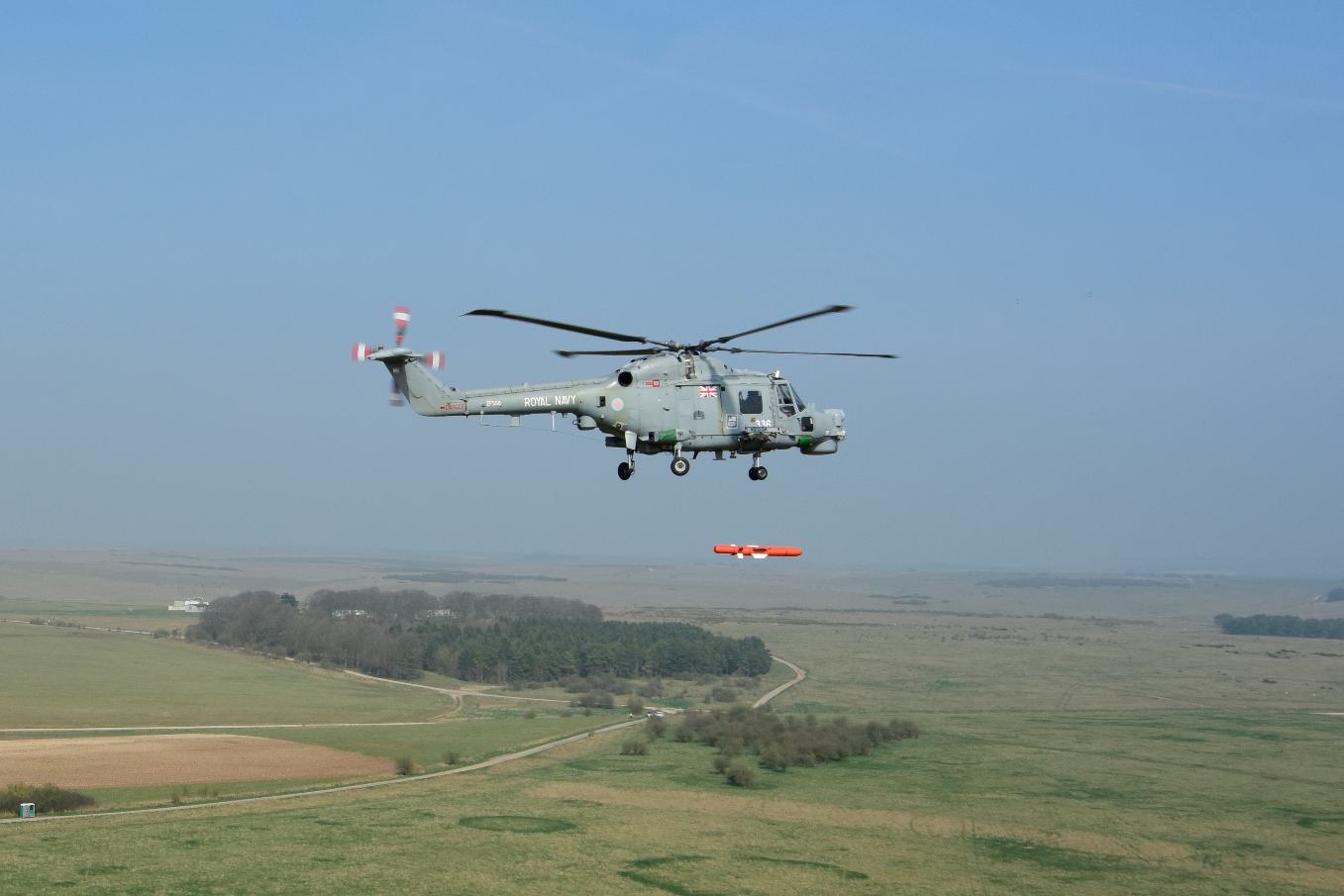MBDA has successfully conducted air carriage and jettison trials of its Sea Venom/ANL anti-ship missile on board the Lynx Mk 8 naval helicopter. The trials validated missile integration onto the Lynx and Super Lynx helicopters, which remain in frontline service with many customers worldwide.
Sea Venom/ANL has been developed to deliver an enhanced capability to replace systems such as the UK-developed Sea Skua and the French-developed AS15TT anti-ship missiles. It is designed to offer ‘fire-and-forget’ capabilities in even the most complex littoral environments.
The trials were conducted by MBDA in collaboration with the UK Defence Solutions Centre (DSC), the Royal Navy and QinetiQ, working together through the Defence Growth Partnership (DGP) initiative.
A Royal Navy Lynx Mk8 successfully conduct a series of air carriage trials prior to jettisoning two Sea Venom missiles fitted with telemetry kits. MBDA says the trials have resulted in a de-risking of the integration process of Sea Venom on both the Lynx and Super Lynx helicopters for the export market.
The 100kg-class missile is one of the products of French-U.K. collaboration on missile technologies. In UK service, the missile is planned to be used from the AW159 Wildcat helicopter, while in France the DGA defence procurement agency is currently conducting the development flight campaign for the missile on a Panther test bed helicopter. The new trials on board the Lynx Mk 8 validate that the missile can be easily integrated onto any platform.

